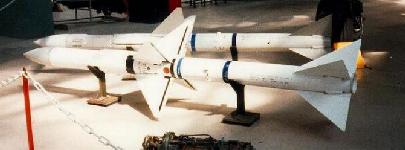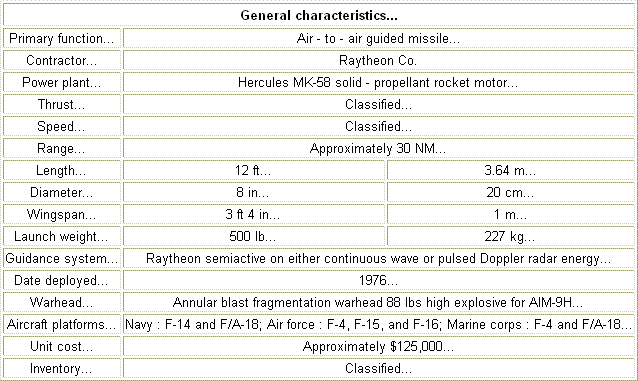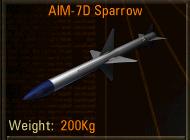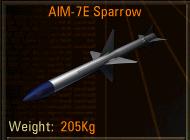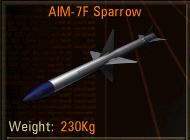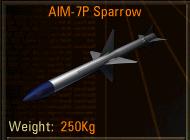
Info about the "Air to Air" Missiles...
AIM - 7 Sparrow...
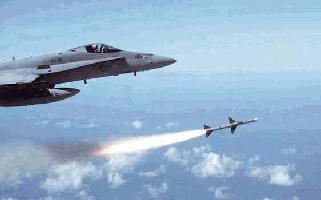
Background...
The AIM-7 Sparrow is a radar-guided, air-to-air missile with a high-explosive warhead. The versatile Sparrow has
all-weather, all-altitude operational capability and can attack high-performance aircraft and missiles from any
direction. The AIM/RIM-7 series is a semiactive, air-to-air, boost-glide missile, designed to be either rail or ejection
launched. Semiactive, continuous wave, homing radar, and hydraulically-operated control surfaces direct and stabilize the
missile on a proportional navigational course to the target. Propulsion for the missile is provided by a solid propellant
rocket motor. It is a widely deployed missile used by U.S. and NATO (North Atlantic Treaty Organization) forces. In the
Persian Gulf war, the radar-guided AIM-7 Sparrow proved to be a potent air-to-air weapon used by Air Force fighter pilots.
Twenty-two Iraqi fixed-wing aircraft and three Iraqi helicopters were downed by radar-guided AIM-7 Sparrow missiles. The
Sparrow is limitated by the requirement that the aircraft it is fired from must continue to paint the target with radar,
limiting that aircraft to straight and level flight. The AIM-7M/P Sparrow Missile is employed during air-to-air combat
missions by Navy F-14, Navy and Marine Corps F/A-18, and Air Force F-15 and F-16 aircraft. The AIM-7 (series) is used
primarily to neutralize the threat of high performance enemy aircraft. It is a supersonic, medium-range missile with
Defensive Counter Countermeasure capabilities, which includes Electronic Protection from Electronic Attack. It guides
on radio frequency energy, processing radar signals received via its rear signal receiver from the launch platform’s
radar system and reflected target energy received directly from the target.
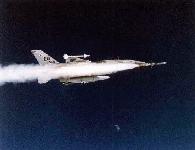
The AIM-7M/P is controlled in flight by four movable delta platform wings. Missile stability is provided by four fixed
delta fins which are located in-line with the forward wings. Missile propulsion is provided by a dual-thrust, solid
propellant rocket motor. An active radio frequency fuze detonates the warhead when the missile is within lethal range
of the target. The missile has five major sections: radome, radar guidance system, warhead, flight control (autopilot
plus hydraulic control system), and solid-propellant rocket motor. It has a cylindrical body with four wings at mid-body
and four tail fins. Although external dimensions of the Sparrow remained relatively unchanged from model to model, the
internal components of newer missiles represent major improvements with vastly increased capabilities. Sparrow is a
supersonic, medium range, aerial-intercept missile, which guides on RF energy. The missile processes radar signals
received directly from the launch platform’s radar via its rear signal receiver, and also processes RF energy reflected
from the target received by its own internal radar receiver (front signal). Sparrow is controlled in flight by four movable
delta platform wings. Missile stability is provided by four fixed delta fins which are located in line with the forward
wings. Missile propulsion is provided by a dual-thrust, solid propellant rocket motor. An active RF fuze detonates the
warhead when the missile is within lethal range of the target. To increase performance in either application, air-to-air
or surface-to-air, Sparrow contains switching circuits that automatically program missile operation for optimum performance
in the appropriate environment. The Sparrow Weapon System consists of the radar-guided missile; the support equipment
consisting of test, handling, and training equipment, tools and reusable containers; and the aircraft or ship’s equipment
required to launch the missile.
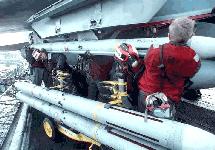
Guidance Section...
The GCS tracks a target, directs and stabilizes the missile on a lead-angle navigation course to the target, and starts
warhead detonation by use of an active radar proximity fuze or a backup contact fuze. The guidance system uses energy
reflected from the target and data received from the missile fire control system to track the target. A comparison of
these signals allows the guidance section to sense changes in target position and create signals used by the control
section to control movement of the wings and thus maintain course to target intercept. Missile-to-target closing speed
is derived by a comparison of the signals (doppler shift) received by the front antenna and the rear reference antenna.
Guidance Section. The Guidance Section is a solid-state design. The Guidance Section is constructed modularly and includes
a radome, tunnel cable to the control section, forward antenna, target and rear receivers, an embedded Missile Borne
Computer (MBC), a radar fuze unit, and electric gimbaled motors.
Control Section...
The control section consists of an autopilot and a hydraulic control group which provide wing control to guide the missile
to the target and to stabilize the missile. An accumulator supplies the hydraulic power to move the wings in response to
guidance command signals from the autopilot. In addition to circuits for processing guidance and stabilization signals,
the control section also contains an AC/DC converter for adapting external power for missile requirements before launch.
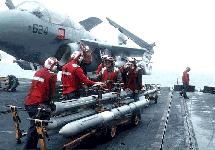
Warhead Assembly...
The Warhead Assembly includes a fuze booster, transfer lead (WAU-17 warhead only), Safe-Arm Device (SAD), and the main
explosive charge. The warhead assembly is located between the guidance section and control section. It is connected
electrically to the guidance section by a SAD cable. At launch, a thrust-activated mechanism in the SAD starts the
arming cycle. When the missile receives a launch signal, voltage is applied to unlock the arming mechanism. As the
missile accelerates, the arming rotor turns, aligning the explosive train and removing the shorting circuit. This
completes the firing circuit. Detonation is triggered by a fuze pulse from the active RF fuzing circuit in the guidance
section at the nearest point of intercept or by an impact switch located in the control section.
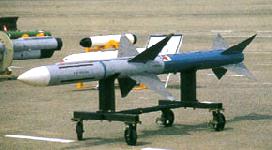
WAU-10/B and WAU-10A/B Warhead Assembly...
The WAU-10/B Warhead Assembly includes a MK-71 Mod 0 Warhead Section with a MK-33 Mod 0 SAD and MK-33 Mod 1 fuze booster.
The WAU-10A/B Warhead Assembly is similar to the WAU-10/B except it has a MK-38 Mod 2 fuze booster. Both warhead assemblies
are of the insulated continuous-rod type.
WAU-17B and WAU-17A/B Warhead Assembly...
The WAU-17B Warhead Assembly includes a WDU-27B Warhead Section with a MK-33 Mod 0 SAD, a MK-38 Mod 1 fuze booster, and a
MK-26 Mod 0 transfer lead. The WAU-17A/B Warhead Assembly is similar to the WAU-17B except it has a MK-38 Mod 2 fuze
booster. The transfer lead extends the explosive train from the SAD to the fuze booster. Both warhead assemblies are of
the end-initiated blast fragmentation type.
Fuze Booster...
When ignited by a SAD, the fuze booster charge ignites the main warhead charge. The MK-38 Mod 2 fuze booster is designed
to melt rather than detonate when exposed to high heat. This provides an added safety feature for ordnance personnel and
fire fighters.

Rocket Motor Assembly...
The MK-58 Rocket Motors are dual-thrust, solid propellant propulsion units. The case bonded grain consists of separate
boost and sustain propellants in a side-by-side configuration. The rocket motor assembly consists of three major
subassemblies: a case with propellant grain, a safe-arm ignition assembly and a nozzle weather seal at the rear.
Integral parts of the case are the attachment points which include the forward skirt, launch hooks, waveguide clips,
antenna bracket, and fin dovetail slots.
MK-58 Mods 2, 3, and 5 Rocket Motor Assemblies...
These rocket motor assemblies are used with the air-launched missiles (AIM-7M/P) and include a safe-arm ignition assembly
with an Arm-Fire Device (AFD) relock assembly. The AFD relock T-handle, which locks in either the SAFE or ARM position,
cannot be removed, and is used to arm the rocket motor manually before flight.
Wing and Fin Assemblies...
Four wings and four fins provide the flight control surfaces for Sparrow. The wings attach to the hub assembly of the
control section and the fins mount into dovetail quick-attach fittings on the rear of the rocket motor.
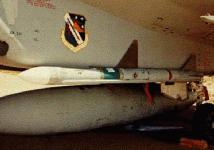
Rear Waveguide Assembly...
A structural rear waveguide assembly containing the rear antenna is installed externally on the missile airframe. The rear
waveguide is constructed in two parts with the forward section connecting to internal RF circuitry in the guidance section.
The forward section also serves as a protective cover for the tunnel cable which electrically interconnects the GCS. The
aft assembly contains the rear antenna and is joined to the forward section at the rear of the control section, and runs
aft to the rear of the rocket motor.
Training Missiles...
The AIM-7 Missile System uses several types of training missiles: Air-launched Training Missile (ATM)-7M/P; the Captive
Air Training Missile (CATM)-7F- 3; and the Dummy Air Training Missile (DATM)-7F-11. The ATM-7M/P is a live-fire missile
that is an AIM-7M/P with the warhead section replaced with a telemetry section. The CATM-7F-3 and the DATM-7F-11 are used
primarily for AIM-7M/P maintenance training, and are completely inert. Additionally, the CATM-7F-3 is used by F-14 aircrews
for some training events/exercises. F/A-18 aircrews use a simulator plug (commonly referred to as a wafer) in the launcher
umbilical that precludes the use of the CATM-7F-3, and enables the aircraft’s embedded training capability via its on-board
computers.

Variants...
The Sparrow missile is a supersonic, medium-range, aerial-intercept missile that guides on Radio Frequency (RF) energy.
Sparrow incorporates Electronic Counter-Countermeasure (ECCM) capabilities, also known as Electronic Protection (EP), to
defeat countermeasures such as jamming. The Sparrow began as project Hotshot in 1946, and became operational in late 1953.
Experience during the Vietnam war demonstrated it to be virtually useless against manuvering targets.
We have 4 variants at the game...
A special AIM-7E-2 dogfight version was produced to overcome these shortcomings. Current configurations of the Sparrow
missile include four air-launched variants, AIM-7M F1 Build, AIM-7M H Build, AIM-7P Block I, and AIM-7P Block II, and as
many ship-launched variants, RIM-7M F1 Build, RIM-7M H Build, RIM-7P Block I, and RIM-7P Block II. Each new version has
resulted in substantial improvement in missile performance. The AIM/RIM-7E reduced minimum range restrictions and provided
dogfight capabilities. The RIM-7H incorporates rapid run-up capabilities, providing improvements over previous versions.
The AIM-7F incorporates solid state circuitry and modular design, an improved warhead, and a boost-sustain rocket motor.
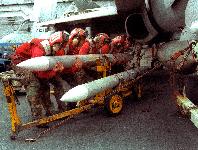
The AIM/RIM-7R is most recent configuration and adds a dual mode radio frequency/infrared (RF/IR) seeker capability. The
AIM-7F joined the Air Force inventory in 1976 as the primary medium-range, air-to-air missile for the F-15 Eagle. The
AIM-7F was an almost completely new missile, gaining ability from improved avionics that allowed the warhead to be moved
to the front, allowing a bigger motor to be carried that has improved range. The AIM-7M, the only current operational
version, entered service in 1982. It has improved reliability and performance over earlier models at low altitudes and
in electronic countermeasures environments. It also has a significantly more lethal warhead. The latest software version
of the AIM-7M is the H-Build, which has been produced since 1987 and incorporates additional improvements in guidance.
AIM/RIM-7M DT and OT was successfully completed in FY82. The F-15 Eagle and F-16 Fighting Falcon fighters carry the
AIM-7M Sparrow. The RIM-7M Sparrow is employed during ship-to-air combat missions by Spruance class Destroyers outfitted
with the North Atlantic Treaty Organization (NATO) Sea Sparrow Missile System (NSSMS). In ship-to-air combat evolutions,
Sparrow is used primarily to neutralize the threat of high performance, anti-ship missiles. The RIM-7M guidance and control
section is common with the AIM-7M. When used in the surface launched RIM configuration, folding wings, clipped fins, and a
remotely armable rocket motor are used. The AIM/RIM-7P Sparrow missile has undergone two block modifications. The
AIM/RIM-7P Block I provides low altitude guidance and fuzing capability. The AIM/RIM-7P Block II provides increased
memory and throughput to the MBC, enhanced production software reprogrammable capability, and mid-course uplink
improvements to the rear receiver. The AIM/RIM-7P Block I retrofit included an upgrade of the MBC in the guidance
section (WGU-6D/B) and incorporation of a new fuze (DSU-34/B). Approximately 600 missiles were upgraded to the Block I
configuration.
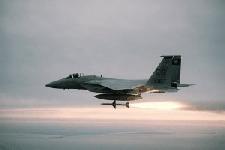
The AIM/RIM-7P Block II upgrade included modification of the MBC in the Guidance Section (WGU-23D/B), incorporation of the
new fuze, and a new rear receiver. The AIM/RIM-7P Block I and AIM/RIM-7P Block II have the same approximate weight, center
of gravity, and general mass distribution properties as the AIM/RIM-7M Guidance Sections. The AIM/RIM-7P program began as
a retrofit program to AIM/RIM-7M Guidance and Control Sections (GCS) and resulted in a new build contract for AIM/RIM-7P
Block II GCS. Follow-on AIM/RIM-7P Block II procurements will upgrade existing AIM-7M inventories and provide replacement
for AIM-7M missiles lost through FMS. Remaining AIM-7M Missiles will continue to be supported until phase-out or other
action through the FMS Replacement-In-Kind (RIK) program. The AIM/RIM-7P Sparrow Test and Evaluation Master Plan,
M159-1RIM-7P, dated 21 July 1989, was developed for the AIM/RIM-7P. Developmental and operational test and evaluation
phases for the AIM/RIM-7P have been completed. Developmental Test (DT) for the AIM/RIM-7P occurred in first quarter FY90
through second quarter FY90. Operational Test (OT) occurred in third quarter FY90 through second quarter FY91. Follow-On
Test and Evaluation (FOT&E) for Block I and II AIM/RIM-7P Missiles was completed fourth quarter FY93 through second quarter
FY94 using retrofit kits in Government Furnished Equipment missiles. The AIM/RIM-7P was introduced to the fleet through GCS
retrofit and GCS new production contracts. The AIM/RIM-7P retrofit program began deliveries in November 1993. Because the
upgrade from AIM/RIM-7M to AIM/RIM-7P did not impact Carrier Air Group (CAG) operation and maintenance procedures, a unique
Fleet introduction was not required. All AIM/RIM-7P upgraded elements are contained in the guidance section to reduce
technical risk. The AIM-7P modifications are incorporated in blocks. The AIM/RIM-7R was the latest Sparrow new development,
but the program was halted in the first quarter of FY97 following completion of its DT/OT program. The AIM/RIM-7R integrated
a passive infrared seeker in its radome for terminal guidance. Requirements for a dual mode seeker AIM-7R were rescinded in
FY96. The AIM/RIM-7P Block II was the baseline for the AIM/RIM-7R missile.
